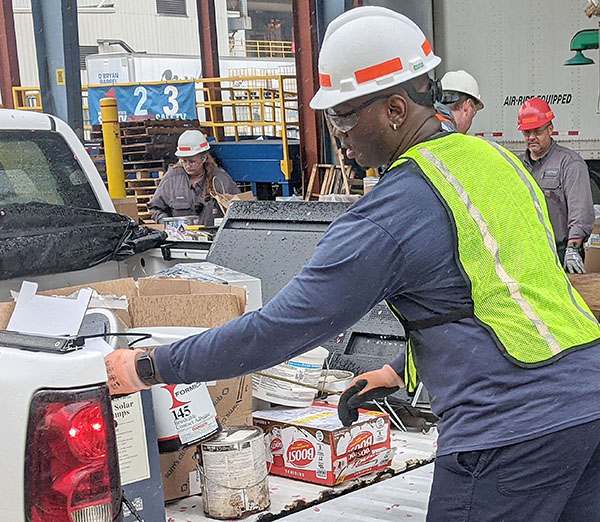
What is an aerosol can?
The basic aerosol can of today has not really changed since the 1920’s. It is a metal can in which two fluids are sealed. One fluid is the product that is to be dispensed and the other is the propellant. The propellant is a compressed gas that expands when the aerosol can is opened (generally by pushing a button or pulling a lever). The propellant forces the product through a tube in the can and out the nozzle. Many different products are dispensed in aerosol cans, from shaving cream to cooking spray or room fresheners. Although the cans these products come in may look different, the mechanism behind them is the same.
When is an aerosol can hazardous?
Due to regulations concerning Chlorofluorocarbons (CFCs) and Hydrochlorofluorocarbons (HCFCs) most aerosol cans today use a hydrocarbon propellant. While this type of propellant is less harmful to the ozone layer than CFCs and HCFCs were it is highly flammable.
If an aerosol can held a substance that is regulated as hazardous it must “drained or emptied to less than 3% by weight of the total capacity of the container (40 CFR 261.7)” or it is considered a hazardous waste.
That said, even aerosol cans that have been drained to less than 3% will likely still contain propellant (which can be reactive when combined with an igniting force) and as such will still be considered hazardous. So, unless a can is fully emptied of propellant it is still considered a hazardous waste and should be disposed of accordingly.
How should I dispose of my aerosol cans?
For a business, an aerosol can that has been both punctured and drained of its contents would meet the definition of scrap metal (40 CFR 261.1) and can be recycled. Regulations for puncturing change though and need to be checked on both a national and state level. If not punctured and recycled, a hazardous waste determination must be made and the can(s) must be disposed of appropriately.
For an individual or home, RCRA does not regulate how you dispose of your aerosol cans. If you would like to do the best/most environmentally friendly thing though you could take your old aerosol cans to a local household hazardous waste collection.
And remember, this post is meant to provide general information about managing aerosol cans. It is always important to consult the actual state and federal statutes and regulations before making any decisions that may impact regulatory compliance.
More News From Heritage
-
10/14/24
Heritage Environmental Services Announces Timothy Thomas as Chief Operating Officer
Heritage Environmental Services (“HES”), an EQT Infrastructure portfolio company, announced today that Timothy Thomas will join the organization as Ch
-
10/1/24
Heritage Environmental Services Complete Acquisition of EBV from General Dynamics
Heritage Environmental Services, an EQT Infrastructure portfolio company, has completed the acquisition of EBV from General Dynamics.
-
7/31/24
PFAS Regulations: Is 6 the Magic Number?
Learn more about the current and proposed regulation for PFAS and what they mean from our Chief Sustainability and Innovation Officer, Angie Martin.
-
6/27/24
Heritage Environmental Services to Acquire EBV from General Dynamics
Heritage Environmental Servicess, an EQT Infrastructure portfolio company, will acquire EBV from General Dynamics
-
6/13/24
Meet The Facilities – East Liverpool
An inside look at our incineration facility located in East Liverpool, OH
-
5/24/24
Habitat for Humanity 2024
Heritage hosted our 14th annual Habitat for Humanity build this month, partnering with over 50 employees from various THG companies.
-
5/6/24
Date set for the household hazardous waste collection in East Liverpool, Ohio
-
3/12/24
Equal Pay Day – Spotlighting Our Female Drivers








